Welcome to Amblone, your source for tech updates, reviews and news!
Take a look around and make yourself at home


Amblone is your one stop blog for tech news and reviews.
Our latest 10 posts from Amblone blog
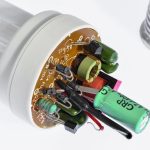 Exploring the Safety Features of the X-Rated Capacitor in a DIY LED Light Bulb
Exploring the Safety Features of the X-Rated Capacitor in a DIY LED Light Bulb DIY LED Light Projects: Step by Step Guide
DIY LED Light Projects: Step by Step Guide- The Advantages and Considerations of LED Lighting
 The Importance of Natural Light for Health and Well-Being
The Importance of Natural Light for Health and Well-Being Alternatives to LED Lighting: CFL Bulbs, Candlelight, Sun, and Moon
Alternatives to LED Lighting: CFL Bulbs, Candlelight, Sun, and Moon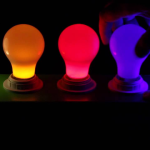 How to Make Your Own LED Lights, colorful?
How to Make Your Own LED Lights, colorful?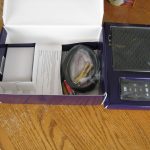 Why are Streaming Boxes so BAD?
Why are Streaming Boxes so BAD?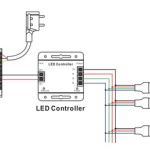 How to Easily Connect Multiple LED Strips to One Power Source
How to Easily Connect Multiple LED Strips to One Power Source Revolutionary Lithium Replacement: The Future of EV Batteries?
Revolutionary Lithium Replacement: The Future of EV Batteries?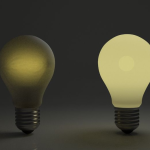 Benefits of Dimming Lights: How Lowering Light Intensity can Reduce Your Energy Consumption
Benefits of Dimming Lights: How Lowering Light Intensity can Reduce Your Energy Consumption
Popular Tech News Categories
If you are looking for the original Amblone Led Light please read.
Thank you for stopping by the Amblone Tech Blog. We first found this domain and started to work on it before we found out about the original Amblone Product and information that was provided here prior to us starting the blog. As this is the case we wanted to ensure that the work that had gone into the previous product had not gone to waste as there were people who contacted us looking for that info.
While we know that we did not invest the time and energy that initially went into the product we don’t want it to go to waste as it was created to be shared ( at least we thought so ) as there was never any charge to it and many people helped it alone the way. This being said we are planning to provide the information that was previously available to visitors.
We did not copy the words as we don’t feel that it would be right to put up that info, so instead we have paraphrased it to the best of our ability. If you are one of the original creators of Amblone and do not wish this to happen please contact us and let us know and we would be happy to remove everything. We do not in any way try to represent ourselves as anyone who had anything to do with the original product, its claims, or work related to it. Rather we are a bunch of guys who got contacted asking about the work and seeing if we could put it up. So if this is offends anyone that originally contributed to the project, just send us an email and we will take it down. If not please keep reading as we have some of the text from the original home page here:
Thanks for stopping by the Amblone website is the official source of information on Amblone, a versatile and user-friendly home automation system. Here you can find everything you need to get started with Amblone.
Amblone is a open source project that allows users to have an ambient lighting experience similar to that of the Philips Ambilight technology. It does this by projecting light onto the wall behind a TV or monitor in the colors that are currently on the screen. The light is achieved by a number of RGB LED strips that are mounted on the back of the screen and controlled by an Arduino microcontroller. The Arduino device is connected to a PC via USB and the PC captures the bitmap from the screen and calculates the average RGB values. These values are then sent to the Arduino which controls the LED strips.
Why should I use Amblone?
Amblone is a system that creates an Ambilight effect. This effect is created by shining lights onto the wall behind a television or monitor, in order to create a more immersive experience for the viewer. Amblone is not the first system to create this effect, but it does offer some advantages over other similar systems.
Amblone offers some advantages that others do not, including affordability, versatility, and customization. Amblone is very affordable. A simple Amblone setup could be achieved for less than $40. If you build a setup like the one in the guide, it will probably cost you around $75.
-Amblone can be used for a wide variety of applications, including gaming, movie watching, web browsing, etc. Because Amblone takes the colour directly from the screen, it does not need any Directshow filters or special support by the video games, and works for almost anything that appears on the screen.
-Amblone has an intuitive, easy to use graphical user interface, where various options can be selected, such as the amount of RGB channels to use, which monitor to get the colour from, etc. Amblone is very customizable. It can be used with a variable amount of RGB channels, allowing you to use 1 to 4 LED strips or lamps. You can place them anywhere you want on your TV, and choose which screen section you want them to get their colour from.
The Amblone system is a do-it-yourself Ambilight system that is easy to follow and does not require a lot of soldering. With this system, you can have your own Ambilight TV that is sure to impress your friends and family.
There are some drawbacks to the approach Amblone takes. We list them here to prevent any disappointments: Getting the colours from your screen takes some CPU time. If you try to run Amblone along with a high-end video game on an old laptop, you will most likely not get the results you are hoping for. The Amblone colours will change very slowly, which does not look good, or the video game will not run smoothly. However, you do not need a high end system for Amblone to get great results on playing videos. Amblone can only take the colours from your PC. It does not work if your TV is not connected to your PC. Amblone does not function with DirectX and hardware acceleration.
Amblone works by taking the average color of the pixels on a screen. This makes it ideal for use with computers, but it will not work with standalone TVs, DVD players, or gaming consoles. If you want to use Amblone on your TV, you will need to connect it to your PC and play your videos from there. A standard Amblone system consists of software, a microcontroller, RGB LED strips, and some electronic parts.
Here’s a complete list: -Amblone software -An Arduino microcontroller, for example the Arduino Mega -A USB A to B cable -RGB LED strips that can be manually controlled (make sure you are not buying some automatically colorsweeping strips!) -Some transistors and resistors (probably 3x the amount of LED strips you have) -A 12V adapter (or whatever your LED strips require) -Some electrical wires -Doublesided tape, or some other equipment to mount the LED strips See the guide for more details.
If you are looking for more information about the original Amblone product you can check out the different posts at https://amblone.com/category/amblone-led-lighting/
Or the Amblone FAQ and the Amblone Guide by clicking right there!
Recent Posts from Amblone Tech Blog
- Exploring the Safety Features of the X-Rated Capacitor in a DIY LED Light Bulb
- DIY LED Light Projects: Step by Step Guide
- The Advantages and Considerations of LED Lighting
- The Importance of Natural Light for Health and Well-Being
- Alternatives to LED Lighting: CFL Bulbs, Candlelight, Sun, and Moon
- How Long Can LED Strip Lights Be: Understanding Length and Compatibility
- Why Do My Recessed Lights Flicker? The Possible Causes and Solutions
- Colored Light Bulbs: DIY guide to Add a Pop of Color
- Troubleshooting a Dusk to Dawn Light That’s Not Working
- How to Put Lights in Resin: A Step-by-Step Guide
- How to Make Your Own LED Lights, colorful?
- How to Easily Connect Multiple LED Strips to One Power Source
- Benefits of Dimming Lights: How Lowering Light Intensity can Reduce Your Energy Consumption
- Is 1000 Lumens Bright Enough to Illuminate Your Home? Guide to Understanding Light Intensity and Luminosity”
- Difference Between 12 Volt Parallel and Series Circuits: Guide to Electrical Connectivity Solutions
- Red Light for Better Sleep: How a Specific Color Can Improve Your Sleep Quality
- The Significance of Voltage When Choosing Light Bulbs
- Difference Between LED Drivers and Transformers: How to Choose the Right Option for Your Lighting Project
- Hanging LED Strip Lights on Walls without Adhesive: Guide to DIY Lighting Installation
- LED Lighting: How to Choose the Best LED Light Colors for Your Home
- Why are Streaming Boxes so BAD?
- Understanding the 120 Ohm Resistor Color Code: What You Need to Know
- The Truth about Overpowered PSUs: Can a Power Supply Unit be Too Powerful for Your Computer?
- TikTok and its Banning in India- what we can learn
- What Does 12VDC Mean: A Comprehensive Guide
- 5 Advantages of Using a Series Circuit in Your Next Electrical Project
- Maximizing the Snipping Tool on Lenovo Computers
- How to Get Fonts in Photoshop: A Step-by-Step Guide
- What Is Zenmap? An In-Depth Look at the Network Mapping Tool
- What is a Retrofit Kit? A Comprehensive Guide
- Revolutionary Lithium Replacement: The Future of EV Batteries?
- Your Easy Guide to Understanding ChatGPT
- TikTok and its Banning in India- what we can learn
- Tik Tok banned in India- maybe here next?
- Netflix is updating their passwords, how does that impact you?
- Whatsapp Hacked.. now what?
- More Twitter Updates
- Facebook joins the layoff party
- And the blue checkmark is gone.. or is it?
- Well that was fast – twitter updates